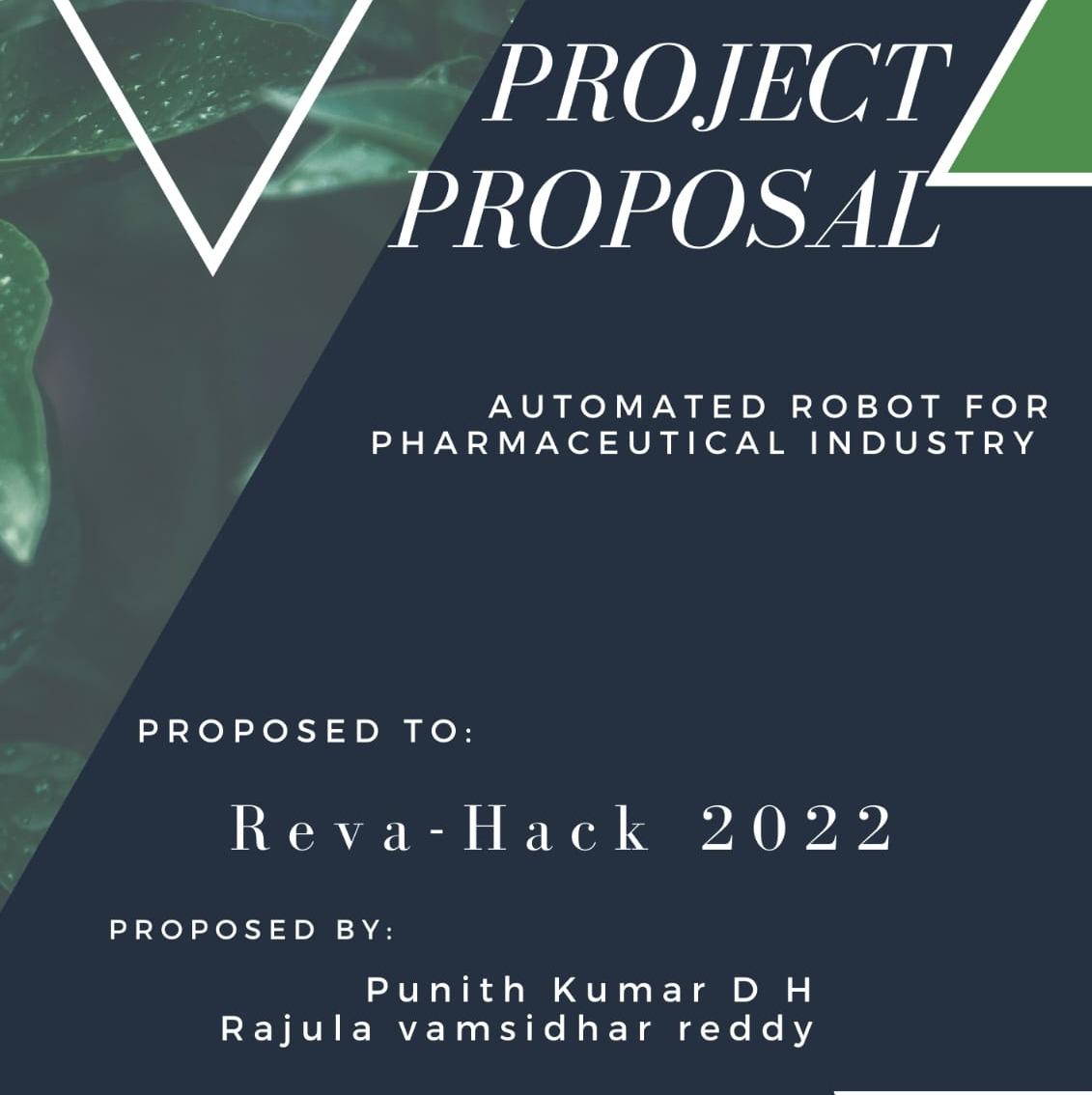Automated Robot For Pharmaceutical Industry
Supply Chain Management In Pharmaceutical Industry Using Iot
Created on 13th November 2022
•
Automated Robot For Pharmaceutical Industry
Supply Chain Management In Pharmaceutical Industry Using Iot
The problem Automated Robot For Pharmaceutical Industry solves
Some of the major problems are faced by pharmaceutical industries are related to lack of coordination between clusters, providers and clients, high dependence on human resources, temperature and humidity controlling facilities, supply chain visibilities etc. This idea intends to provide an insight of internet of things (IOT) in pharmaceutical sectors. By this project we are going to solve these problems. The proposed solution is to develop a system(robot) to monitor environmental indicators such as supply chain management, temperature, humidity, radiation, and light in real time in drug production and storage environment which enables the system to maintain drugs safely. To develop an efficient a reliable technology to make the supply chain of drugs transparent to increase trust among actors and provide security, authenticity and traceability with the help of IOT. To monitor those things, we will use the IOT devices such as radio frequency identification (RFID), raspberry pi, sensors (Based on problems faced), locators. those devices are used to collect the current status of pharmaceutical products at anytime and anywhere. The proposed robot is multi functionality and it is ecofriendly. In Pharmaceutical drugs are essential in diagnosing and treating patients. However, over the past decade, the issue of fraud and abuse drugs in the pharmaceutical supply chain has become increasingly operant. To solve these problems, a transformation of the current pharmaceutical supply chain to include tracking technologies from the source of the ingredients to the consumer, is recommended. internet of things(IOT) has the power to revolutionize pharmaceutical manufacturing in processes arranging from drug discovery to remote patient access and monitoring. A system creates an environment for automated delivery for medicines.
Challenges we ran into
The specific bug we faced here is that while moving the robot it is not detecting the persons, pets, vehicles etc. In this we used the ultrasonic sensors. These sensors are not working properly according to the exact output. So, to overcome this instead of using the ultrasonic sensors we decided to use the radio frequency identification. RFID (radio frequency identification) is a form of wireless communication that incorporates the use of electromagnetic or electrostatic coupling in the radio frequency portion of the electromagnetic spectrum to uniquely identify an object, animal or person. These radio waves transmit data from the tag to a reader, which then transmits the information to an RFID computer program. RFID tags are frequently used for merchandise, but they can also be used to track vehicles, pets, and even patients with Alzheimer's disease. Another bug we face here is that the movement of the robot. The robot is moving only in one direction. Actually, it has to move in all directions and it has to keep on moving and keep on touch with the customers. so, to overcome this we have written the code to run in such a way that it has to move in all directions and it has to be very active like after completing with the first customer it has to consider another customer as soon as possible. While making the prototype we faced many bugs while selecting the hygrometer. In the beginning we chosen electrical hygrometers. These are not supported to electrical hygrometers. So, we finally come to know that wrong electrical hygrometers. To overcome these, we used humidity monitor analyzer. Such as the Caliber 4R and Caliber IV are the most accurate hygrometer devices. They read within ±1% RH, and the humidity range is 20-90%. That means that the Caliber 4R and Caliber IV are accurate within 1% of the actual humidity, surpassing all the other options we reviewed.
